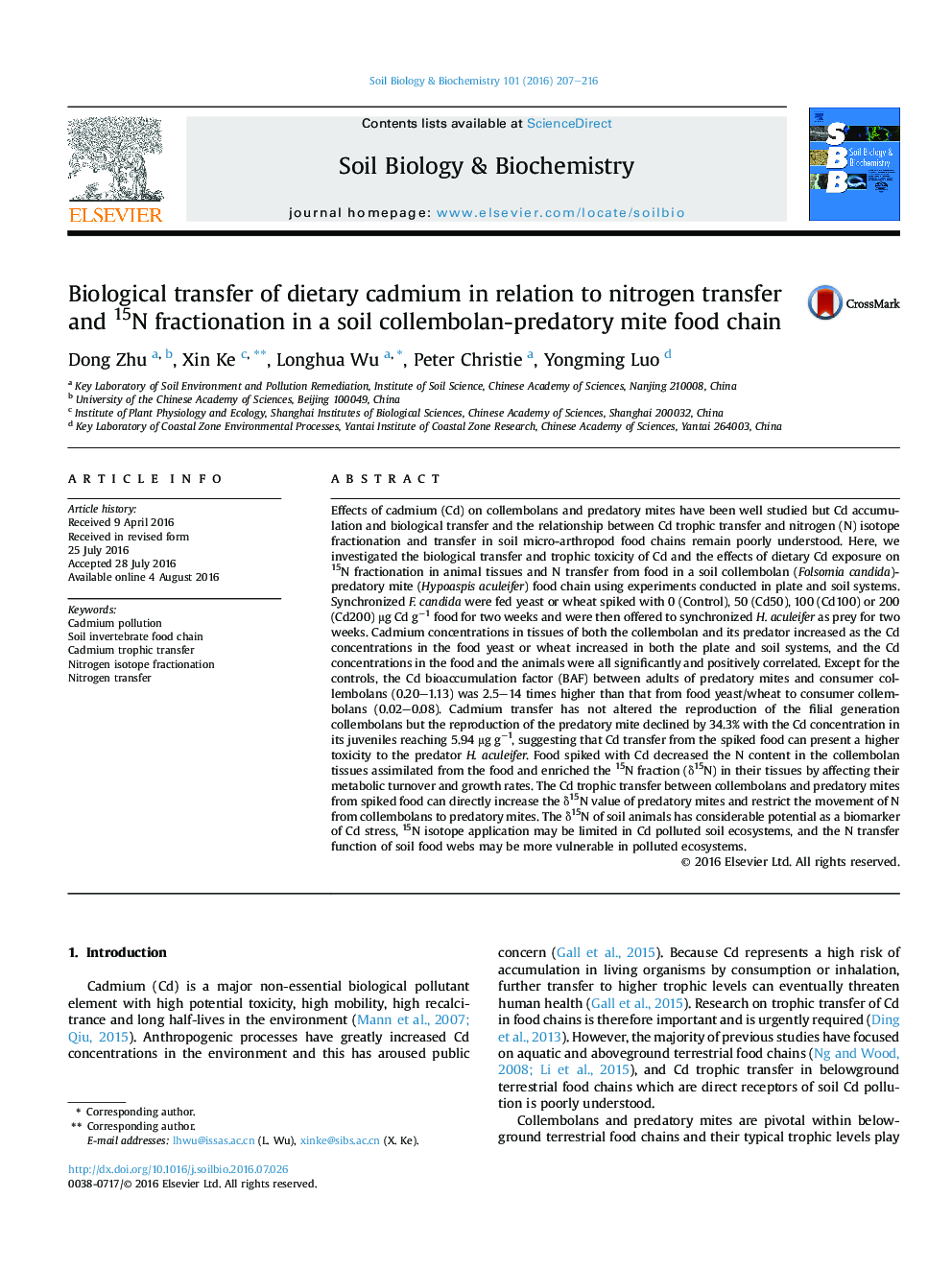| کد مقاله | کد نشریه | سال انتشار | مقاله انگلیسی | نسخه تمام متن |
|---|---|---|---|---|
| 8363485 | 1542583 | 2016 | 10 صفحه PDF | دانلود رایگان |
عنوان انگلیسی مقاله ISI
Biological transfer of dietary cadmium in relation to nitrogen transfer and 15N fractionation in a soil collembolan-predatory mite food chain
دانلود مقاله + سفارش ترجمه
دانلود مقاله ISI انگلیسی
رایگان برای ایرانیان
موضوعات مرتبط
علوم زیستی و بیوفناوری
علوم کشاورزی و بیولوژیک
دانش خاک شناسی
پیش نمایش صفحه اول مقاله

چکیده انگلیسی
Effects of cadmium (Cd) on collembolans and predatory mites have been well studied but Cd accumulation and biological transfer and the relationship between Cd trophic transfer and nitrogen (N) isotope fractionation and transfer in soil micro-arthropod food chains remain poorly understood. Here, we investigated the biological transfer and trophic toxicity of Cd and the effects of dietary Cd exposure on 15N fractionation in animal tissues and N transfer from food in a soil collembolan (Folsomia candida)-predatory mite (Hypoaspis aculeifer) food chain using experiments conducted in plate and soil systems. Synchronized F. candida were fed yeast or wheat spiked with 0 (Control), 50 (Cd50), 100 (Cd100) or 200 (Cd200) μg Cd gâ1 food for two weeks and were then offered to synchronized H. aculeifer as prey for two weeks. Cadmium concentrations in tissues of both the collembolan and its predator increased as the Cd concentrations in the food yeast or wheat increased in both the plate and soil systems, and the Cd concentrations in the food and the animals were all significantly and positively correlated. Except for the controls, the Cd bioaccumulation factor (BAF) between adults of predatory mites and consumer collembolans (0.20-1.13) was 2.5-14 times higher than that from food yeast/wheat to consumer collembolans (0.02-0.08). Cadmium transfer has not altered the reproduction of the filial generation collembolans but the reproduction of the predatory mite declined by 34.3% with the Cd concentration in its juveniles reaching 5.94 μg gâ1, suggesting that Cd transfer from the spiked food can present a higher toxicity to the predator H. aculeifer. Food spiked with Cd decreased the N content in the collembolan tissues assimilated from the food and enriched the 15N fraction (δ15N) in their tissues by affecting their metabolic turnover and growth rates. The Cd trophic transfer between collembolans and predatory mites from spiked food can directly increase the δ15N value of predatory mites and restrict the movement of N from collembolans to predatory mites. The δ15N of soil animals has considerable potential as a biomarker of Cd stress, 15N isotope application may be limited in Cd polluted soil ecosystems, and the N transfer function of soil food webs may be more vulnerable in polluted ecosystems.
ناشر
Database: Elsevier - ScienceDirect (ساینس دایرکت)
Journal: Soil Biology and Biochemistry - Volume 101, October 2016, Pages 207-216
Journal: Soil Biology and Biochemistry - Volume 101, October 2016, Pages 207-216
نویسندگان
Dong Zhu, Xin Ke, Longhua Wu, Peter Christie, Yongming Luo,